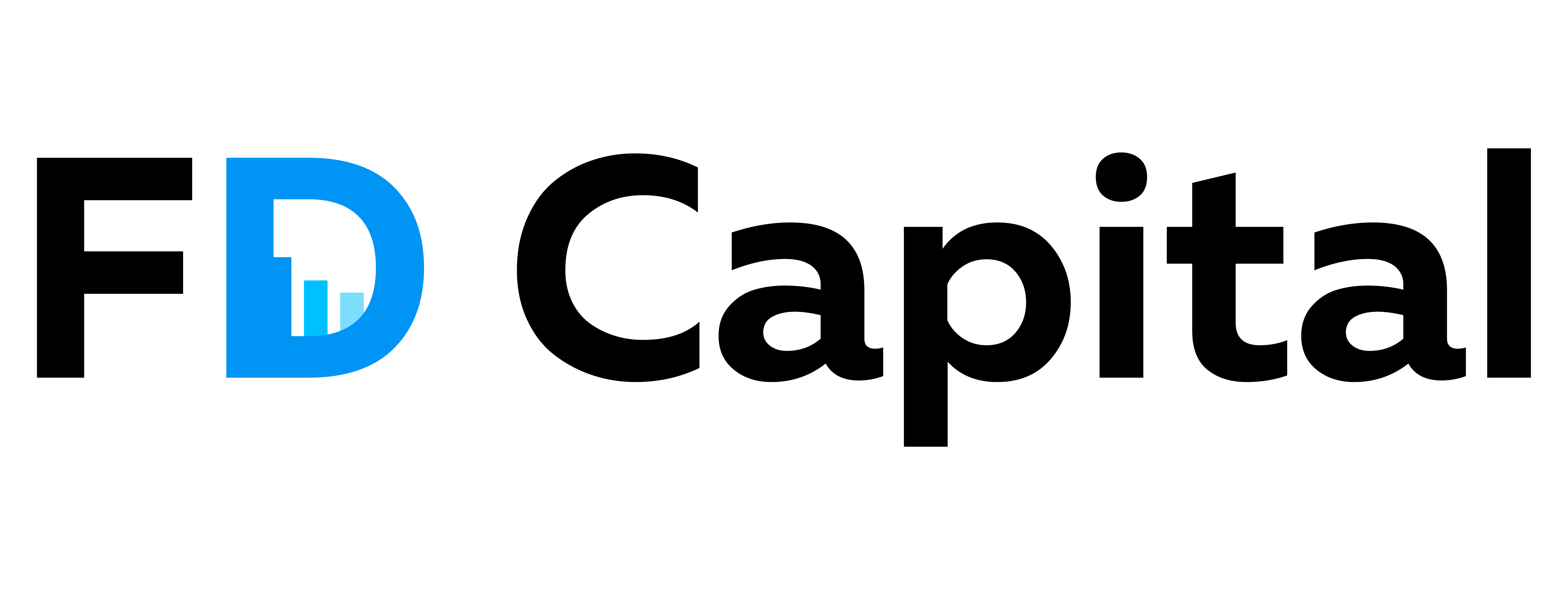How to Achieve Better Board Reporting

How to Achieve Better Board Reporting
As a CFO, you play a leading role in how your company communicates with stakeholders – including board members. You’re likely to be the person with the most intimate knowledge of the company’s finances, including forecasting and KPIs. CFOs will regularly be responsible for creating board reports to update stakeholders on the status of the company’s finances and to provide insights into future strategies. Your board members want a high-level overview of the company’s situation.
If you don’t have a CFO on your team, this is a sign to recruit one. No one else in your team will have the skills, knowledge, and experience to produce a cohesive board report. At FD Capital, we’re a boutique financial recruitment agency that connects businesses and start-ups with senior financial professionals with a focus on the role of CFO.
Whether you’re a business looking to hire a CFO or a financial professional, you want to know how to achieve better board reporting. We’re breaking down everything you need to know about how to enhance your board reports for the most effective results.
What your board report should feature:
Before you can start thinking of how to enhance your board reports, you want to ensure you’ve got everything included that you need. Your board report should include several documents:
- Minutes of the previous board meeting
- Agenda for the meeting
- CEOs report
- Financial report
- Any relevant operational reports
- Relevant board papers
These documents make up the ‘board pack’ that will feed into your reporting.
How to Achieve Better Board Reporting
We’re breaking down step-by-step what you should do to achieve more effective board reporting. Like any form of analysis or reporting, you want to break it down into segments with a focus on how to achieve better reporting at each stage.
As a CFO, you’ll need to be transparent with the board, which involves approaching the reporting process with the right mindset. You also want to put yourself into the board’s shoes, which will help you provide context to your reporting and find ways to build credibility in your reports.
Step 1 – Be in The Right Mind-Set
Before you start your reporting, you want to make sure that you’re in the right mindset. Your company’s board is constantly evolving with regular contact being a part of any CFO’s role. Your board reporting is an opportunity for self-assessment to determine the performance of the company.
You can use this exercise to be more open-minded with your board reporting. It’s an opportunity to rethink how you are currently working and what you can change for the future. As part of your self-assessment, you want to gather qualitative and quantitative data by reaching out to other employees.
Step 2 – Put Yourself in The Board’s Position
When you’re creating any kind of report, you want to think about your audience. After getting into the right mindset, you want to put yourself in their shoes. Most board members won’t be involved in the daily operations of your company, and many won’t have a financial background. In some situations, you may that your board members also sit on the boards of several other companies.
Depending on your company, you may have board members with very busy schedules. Value their time and respect it by choosing to make your presentation as conscience – and informative – as possible.
When you’re creating your board report and presentation, keep yourself in their shoes. What do they need to know? What’s the most important information that they should take away? Instead of thinking about what you should tell them, focus on what they need to know.
If a board member has a follow-up question, they can always contact you after the presentation. Keep your report shorter to allow more time for questions to keep your board engaged and allow them to explore areas that interest them most.
Step 3 – Transparency is Key
Your board will expect you to be objective as a CFO. This fact is even more true if your board contains venture capitalists or representatives from private equity firms. In these scenarios, they’ll look to you as the person who will give them the raw data. You’re a financial professional, not a spin doctor. You might be interested in: What to Prepare Before Meeting Venture Capitalists.
Transparency is at the heart of any good board report. It’s always best to get bad news out in the open, instead of hiding it away for a so-called ‘better time’. There’s no such thing as a “good time” to bury bad news.
On the flip side, if your company is doing well, you want to be showing that off to your board. Instead of placing this good news at the end of your report in an intricate graph, use it to kickstart your presentation.
Your board will always be happier with a report that is transparent with the most objective and up-to-date data. This data should also be grounded in practical insights and forecasting. It’s not enough just to list stats and percentages to your board. They need you to tell them what that data means for the business.
Transparency starts at home. As a CFO, you’re expected to be one of the most important advisors to the company’s CEO. You never want to let them walk blind into a board meeting. Although you’re expected to be an objective party, you want to fully brief your CEO on what they can expect to hear in your board report. You may also want to highlight any specific issues that they may want to respond to if a debate arises amongst the board because of your presentation.
Along with the CEO, your board should receive a quick pre-read briefing before the report is delivered. This pre-read primer should be no longer than two pages in a concise and consistent format, separated by content matter.
Step 4 – Context is Everything
You need to remember that your board members aren’t involved in the daily running of the business. They don’t need a snapshot of what’s happening, they want the big picture context. This aspect is where most board reporting falls short and it’s a direct result of CFOs not thinking how their board does.
It’s not enough to build your board report around stats and colour-coded graphics. Every piece of data you present should have context that provides a clearer picture of how they feed into what’s happening with your company. This insight should feed into a larger narrative that reaches across all aspects of your board report.
Providing context makes it easier for your board members to understand your report and see the significance of what’s in front of them. It’s easy to get carried away and forget about the context.
Make it easier for yourself by thinking about the narrative of each piece of data that you’re presenting. What does it say about where the company is? Where will the data go from here? What does it show about the company’s performance?
Present the context for your data as clearly and straightforwardly as possible. Use visual elements – such as charts and images – to explain what insight the data offers in the context you’re placing it in.
Comparisons can also help drive home the context of a piece of data. Provide a benchmark for your context by using the data to compare where your company is now with where it had been before.
While you’re using your presentation to provide context, you want to avoid letting it become a script. It shouldn’t be a play-by-play of the context, but instead of commentary of the most important top lines.
Step 5 – Be Consistent with Your Reporting
Consistency is key to your board reporting. Your presentation should have a consistent format that creates a narrative that is easy for the board to follow. You should selectively choose the data that is most relevant to your report. It’s always best to start your report on a familiar footing for your board before moving on to new information.
You don’t want to change your reporting style too radically between reports. Your board will appreciate consistency – from using the same key performance indicators to using a similar style of graphs. Look out for graph styles that you can use which make it easy for you to provide commentary on.
When you create your first – or latest – report for your board, identify what are the most relevant KPIs for your board members to be informed of. You’ll want to use this list as the basis for creating your report around to create consistency, whether you’re reporting on an annual or semi-annual basis. This process isn’t always possible, particularly within SaaS companies that can be tracking hundreds of KPIs at any given time.
The easiest way to create consistency in your reporting is by thinking like a board member.
Step 6 – Have Credibility
No board report will be successful if your CFO doesn’t have credibility. Part of building your credibility is by giving a confident presentation. You want to work on your speaking skills and use your slides and presentation as a prop, rather than a script.
Keep your report presentation as professional as possible, using a template wherever possible. The way you present the information to your board will either show you as a confident CFO or have your board walking out confused about the company’s finances and positions.
Take the time to rehearse your presentation and constantly think of your report from the point of view of your board members.
5 Quick Tips for Improving Your Board Reporting
By now, you should have an idea of the most important elements to acing your board reporting as a CFO. It all starts with the mindset and approach that you take to the process. Don’t forget that context is key. You want to give your board the information they need without overloading them with information.
We’re ending this guide with five quick tips that every CFO should use to improve their board reports.
-
Use a high-quality template
You don’t have to be a graphic designer to create a modern-looking presentation. You want to choose a template that has a consistent structure and matches the branding of your company. Look for a template that matches your style of presentation or draft one that you can use to bring consistency to all your board presentations.
If your company doesn’t have a board presentation template to use, consider asking your marketing department for help. Every company has their own style guide and preferred presentations. Nailing your template can also give your presentation more credibility.
Think about the headings that you choose for each slide as they help to build the narrative and overall structure of your presentation. You want it to be as logical as possible.
-
What’s your brief?
If you’re a CFO who is working with your team to create a board report, make sure that everyone understands what their brief is. The report process will be more streamlined and easier to follow if everyone knows exactly what they’re responsible for. The last thing you want is for your report to become so disjointed that you end up back at square one with a blank report.
-
Don’t overload on text or graphics
It’s possible to have too much of a good thing. You don’t want your reports to be too visual or text-heavy. Instead, search for a balance with a focus on staying data-driven while providing commentary.
-
Condense your information first
Your first draft of a board report is not what you’ll be presenting. Take a red pen and start condensing the information that you’ve written. Look for where you can tighten up paragraphs and be more simplistic in the language that you’re using. Check that everything you’ve included is relevant to what the board needs to know.
-
Finish with a Summary
Pull your board report together by finishing with a summary. It should act as an overall analysis and provide an opportunity for the board to gather their thoughts and formulate any questions they have for you.
At FD Capital, we connect businesses with skilled financial professionals who will nail their board reports every time. Your company’s relationship with its board is one that you can never underestimate. Hiring a full-time or part-time CFO can help you build credibility and confidence from your board.
Are you looking to hire a CFO to oversee your board reporting? Get in touch with us today to start the recruitment process.

Adrian Lawrence FCA with over 25 years of experience as a finance leader and a Chartered Accountant, BSc graduate from Queen Mary College, University of London.
I help my clients achieve their growth and success goals by delivering value and results in areas such as Financial Modelling, Finance Raising, M&A, Due Diligence, cash flow management, and reporting. I am passionate about supporting SMEs and entrepreneurs with reliable and professional Chief Financial Officer or Finance Director services.












